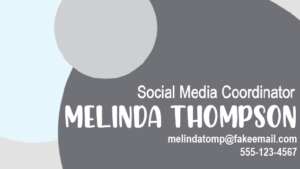Starting a conversation: An exploration of the state of student media websites at Historically Black Colleges and Universities
Abstract
Student media at HBCUs have declined precipitously since 2000 yet provide a significant look at issues meaningful to the Black communities they represent and cover. This study uses content analysis of existing student media websites to assess the state of student media at HBCUs. It finds several notable trends. Frequency of content updates varies, yet student-run news websites are not typically updated daily and are likely updated only when breaking news occurs or when students have new content to post. Stories covering student government or administration were uncommon, and nearly half of the websites did not offer any form of advertising. Medium-sized HBCUs were more likely to have active social media compared to smaller-sized HBCUs, and public HBCUs were more likely to have some form of a media independence statement on their website. These descriptive data provide a starting point for conversations about an important media source and training ground for future Black journalists.
Keywords: HBCU, student media, news websites, content analysis
Continue reading “Research (Vol. 60): Starting a conversation”




 ABSTRACT: Successful college media programs, when judged against their peers, are located in academic departments with faculty-level advisors (Terracina-Hartman and Nulph 2013; Kopenhaver 2015). This study aims to examine communication practices and messages of universities and academic departments that promote these top college media outlets using social media tools. Which is preferred: Facebook or Instagram for celebrating an award? Does a university tag a student newspaper? Or does the department take the lead in announcing? Or does a college newspaper post its good news, tag its home institution, and then academic departments and colleges like, share, retweet, repost and tag? Perhaps the institution, department, and/or student media outlet chooses none of these, making them virtually invisible? The posts – whether celebratory, recruiting, spotlighting an alum, or introducing editors – enhance not only visibility for the college media program, but also produce a level of association between student media and their home institutions.
ABSTRACT: Successful college media programs, when judged against their peers, are located in academic departments with faculty-level advisors (Terracina-Hartman and Nulph 2013; Kopenhaver 2015). This study aims to examine communication practices and messages of universities and academic departments that promote these top college media outlets using social media tools. Which is preferred: Facebook or Instagram for celebrating an award? Does a university tag a student newspaper? Or does the department take the lead in announcing? Or does a college newspaper post its good news, tag its home institution, and then academic departments and colleges like, share, retweet, repost and tag? Perhaps the institution, department, and/or student media outlet chooses none of these, making them virtually invisible? The posts – whether celebratory, recruiting, spotlighting an alum, or introducing editors – enhance not only visibility for the college media program, but also produce a level of association between student media and their home institutions.